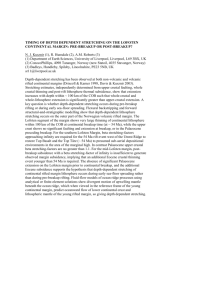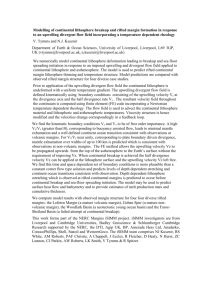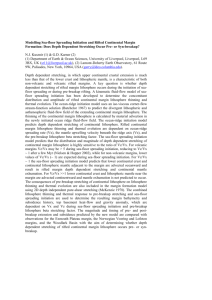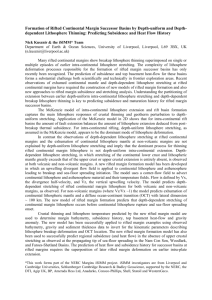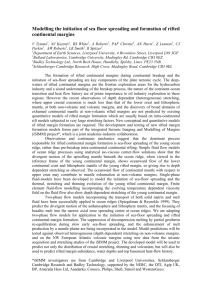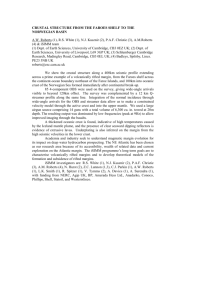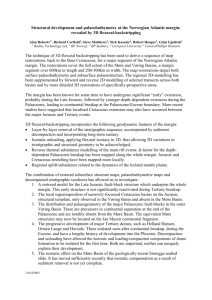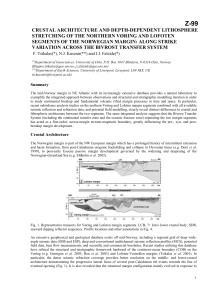PGC_2003_Abs_Lof_Marg
advertisement
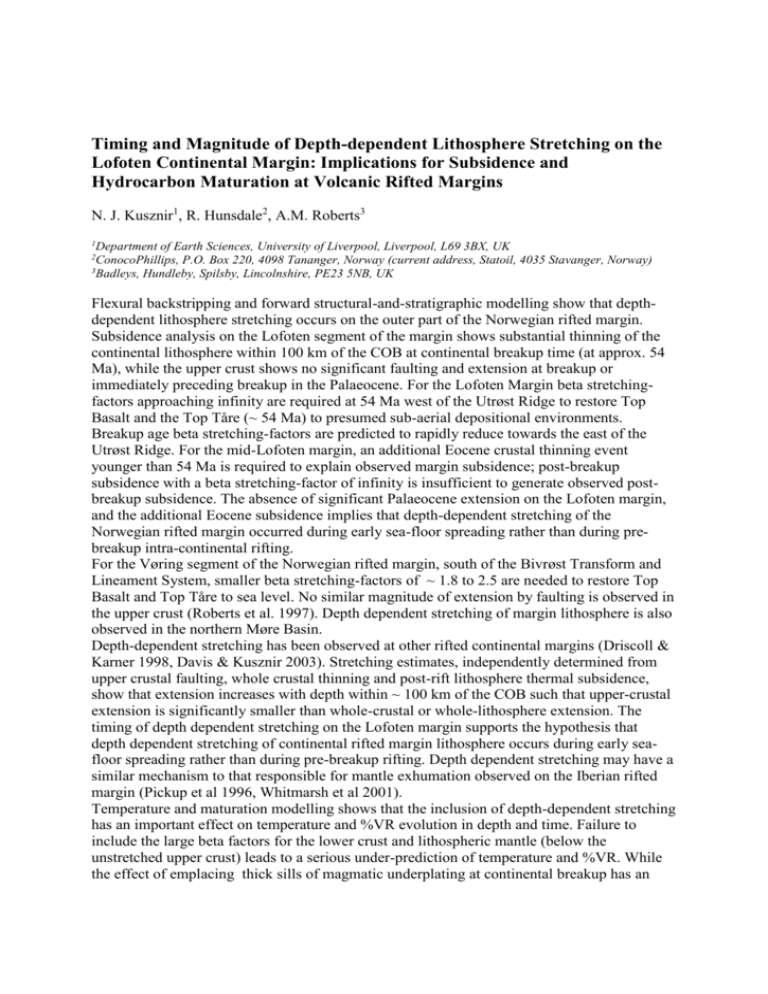
Timing and Magnitude of Depth-dependent Lithosphere Stretching on the Lofoten Continental Margin: Implications for Subsidence and Hydrocarbon Maturation at Volcanic Rifted Margins N. J. Kusznir1, R. Hunsdale2, A.M. Roberts3 1 Department of Earth Sciences, University of Liverpool, Liverpool, L69 3BX, UK ConocoPhillips, P.O. Box 220, 4098 Tananger, Norway (current address, Statoil, 4035 Stavanger, Norway) 3 Badleys, Hundleby, Spilsby, Lincolnshire, PE23 5NB, UK 2 Flexural backstripping and forward structural-and-stratigraphic modelling show that depthdependent lithosphere stretching occurs on the outer part of the Norwegian rifted margin. Subsidence analysis on the Lofoten segment of the margin shows substantial thinning of the continental lithosphere within 100 km of the COB at continental breakup time (at approx. 54 Ma), while the upper crust shows no significant faulting and extension at breakup or immediately preceding breakup in the Palaeocene. For the Lofoten Margin beta stretchingfactors approaching infinity are required at 54 Ma west of the Utrøst Ridge to restore Top Basalt and the Top Tåre (~ 54 Ma) to presumed sub-aerial depositional environments. Breakup age beta stretching-factors are predicted to rapidly reduce towards the east of the Utrøst Ridge. For the mid-Lofoten margin, an additional Eocene crustal thinning event younger than 54 Ma is required to explain observed margin subsidence; post-breakup subsidence with a beta stretching-factor of infinity is insufficient to generate observed postbreakup subsidence. The absence of significant Palaeocene extension on the Lofoten margin, and the additional Eocene subsidence implies that depth-dependent stretching of the Norwegian rifted margin occurred during early sea-floor spreading rather than during prebreakup intra-continental rifting. For the Vøring segment of the Norwegian rifted margin, south of the Bivrøst Transform and Lineament System, smaller beta stretching-factors of ~ 1.8 to 2.5 are needed to restore Top Basalt and Top Tåre to sea level. No similar magnitude of extension by faulting is observed in the upper crust (Roberts et al. 1997). Depth dependent stretching of margin lithosphere is also observed in the northern Møre Basin. Depth-dependent stretching has been observed at other rifted continental margins (Driscoll & Karner 1998, Davis & Kusznir 2003). Stretching estimates, independently determined from upper crustal faulting, whole crustal thinning and post-rift lithosphere thermal subsidence, show that extension increases with depth within ~ 100 km of the COB such that upper-crustal extension is significantly smaller than whole-crustal or whole-lithosphere extension. The timing of depth dependent stretching on the Lofoten margin supports the hypothesis that depth dependent stretching of continental rifted margin lithosphere occurs during early seafloor spreading rather than during pre-breakup rifting. Depth dependent stretching may have a similar mechanism to that responsible for mantle exhumation observed on the Iberian rifted margin (Pickup et al 1996, Whitmarsh et al 2001). Temperature and maturation modelling shows that the inclusion of depth-dependent stretching has an important effect on temperature and %VR evolution in depth and time. Failure to include the large beta factors for the lower crust and lithospheric mantle (below the unstretched upper crust) leads to a serious under-prediction of temperature and %VR. While the effect of emplacing thick sills of magmatic underplating at continental breakup has an important effect on modelled temperature and %VR, their effects are small by comparison with the effects of depth-dependent stretching.
